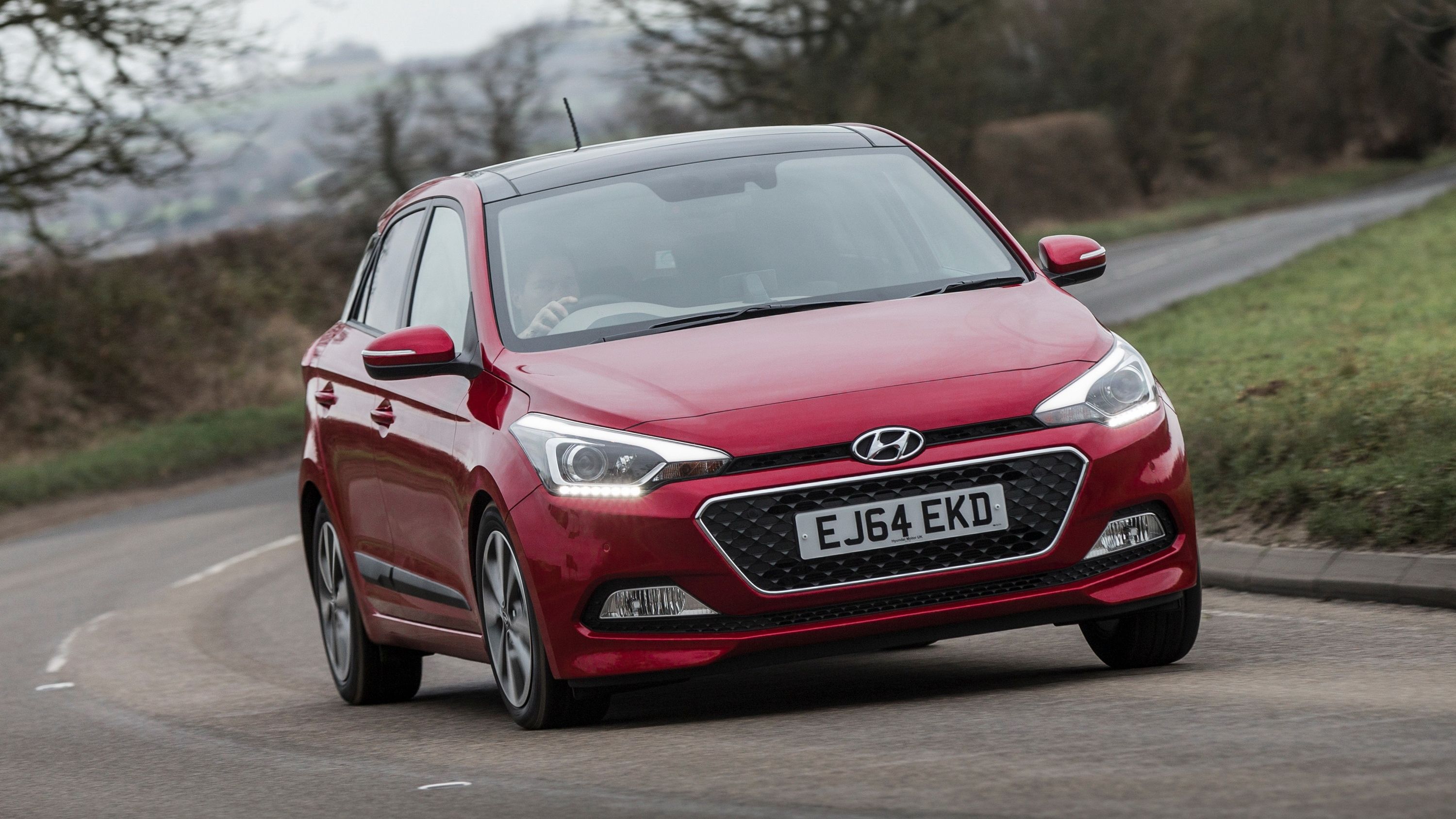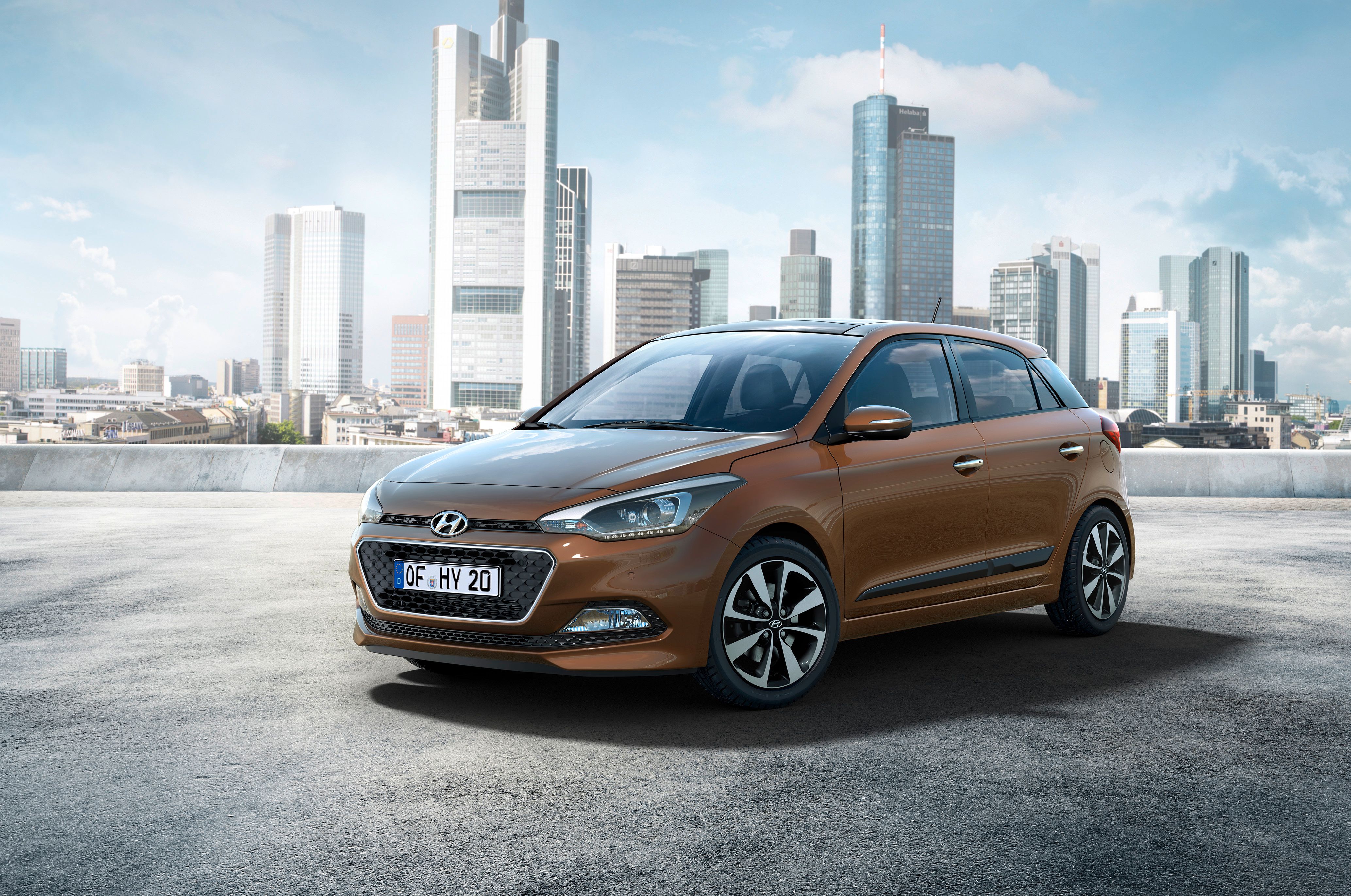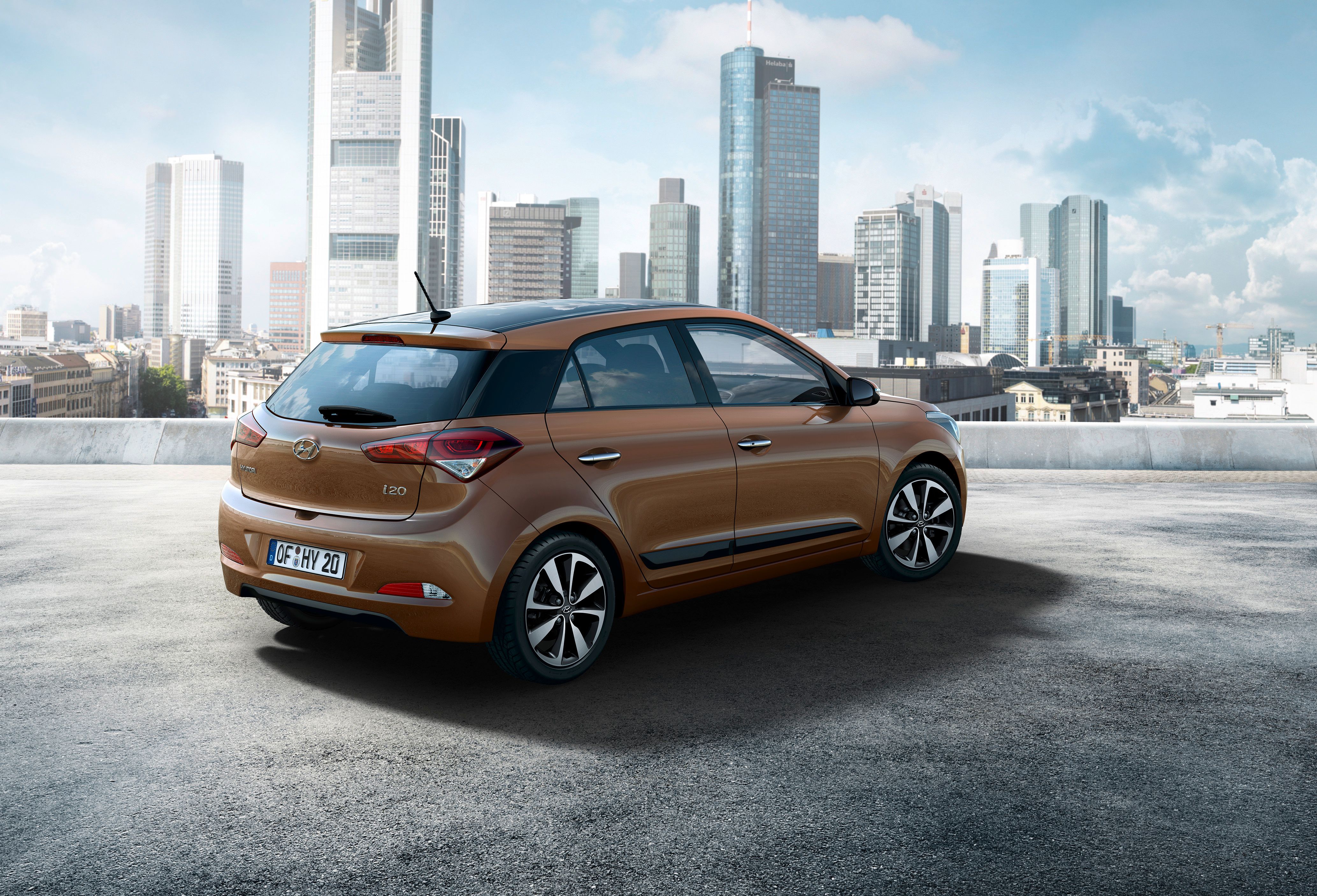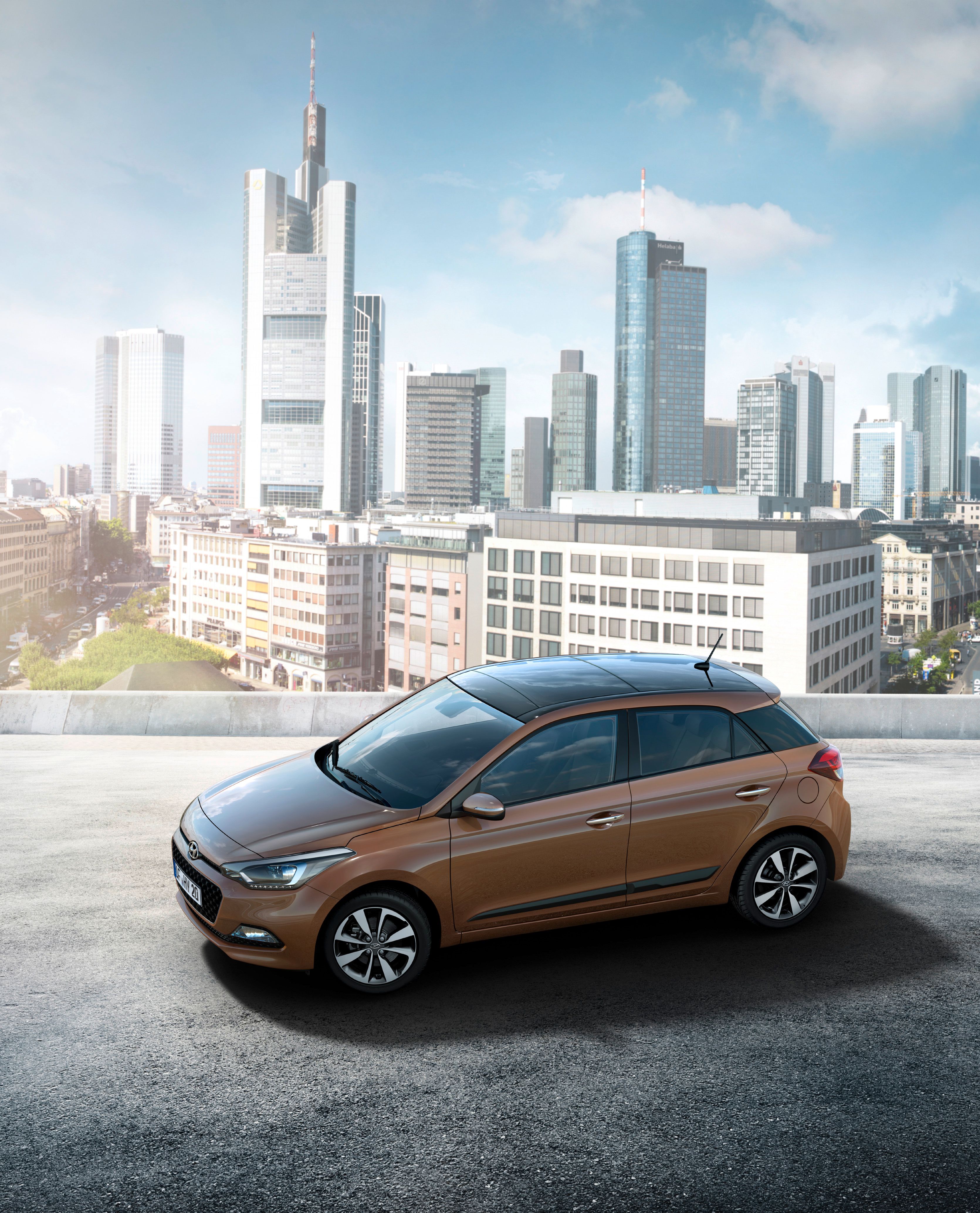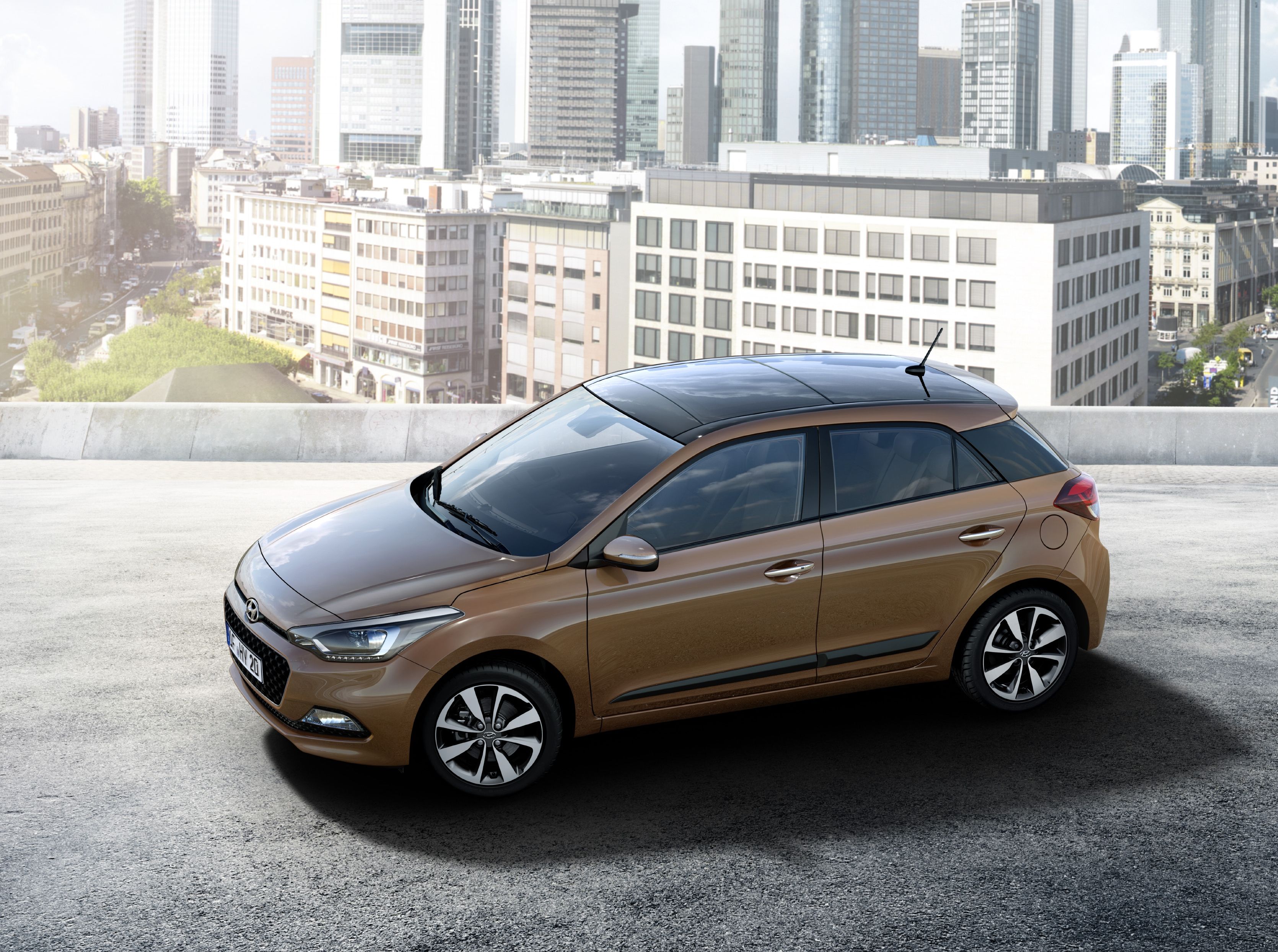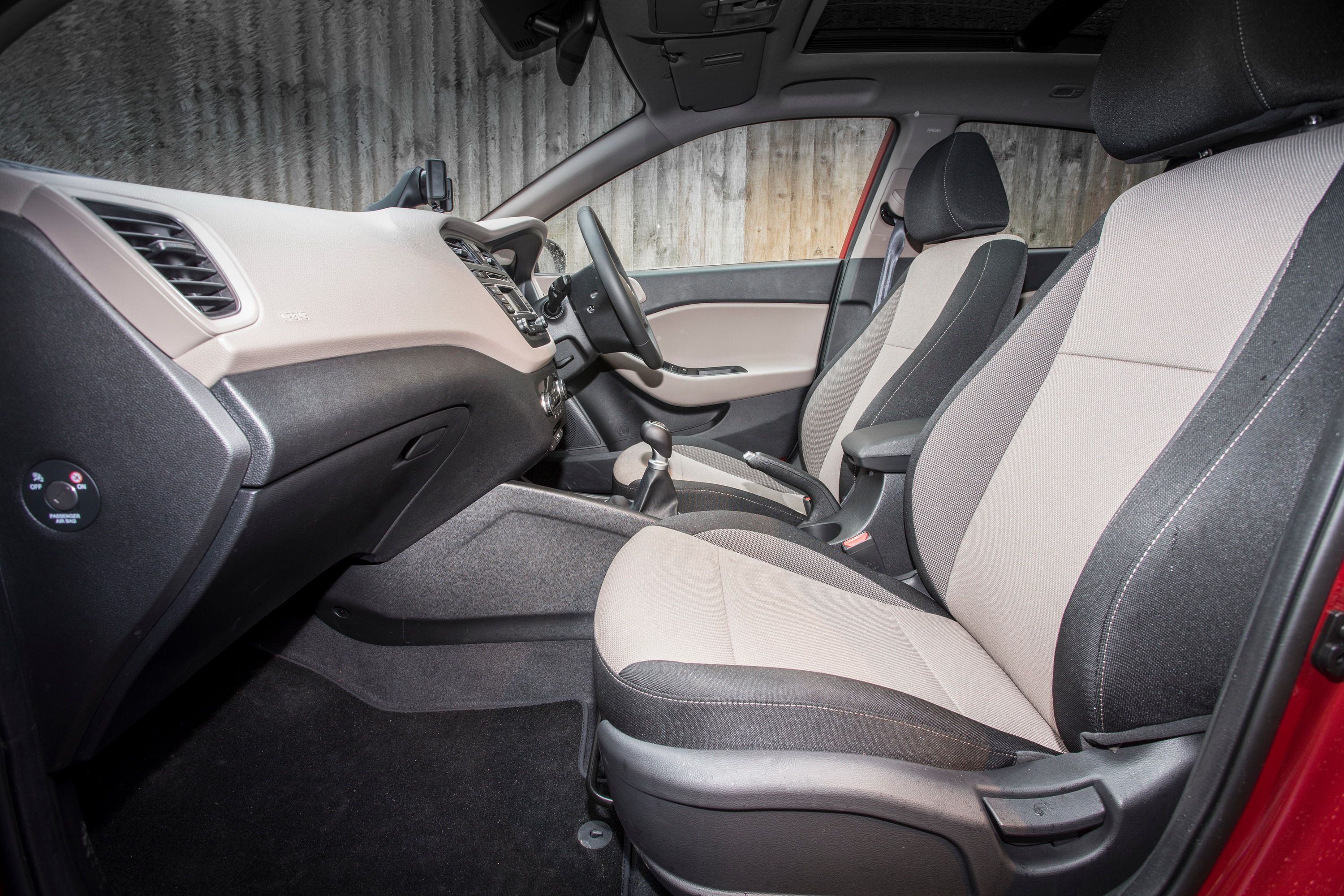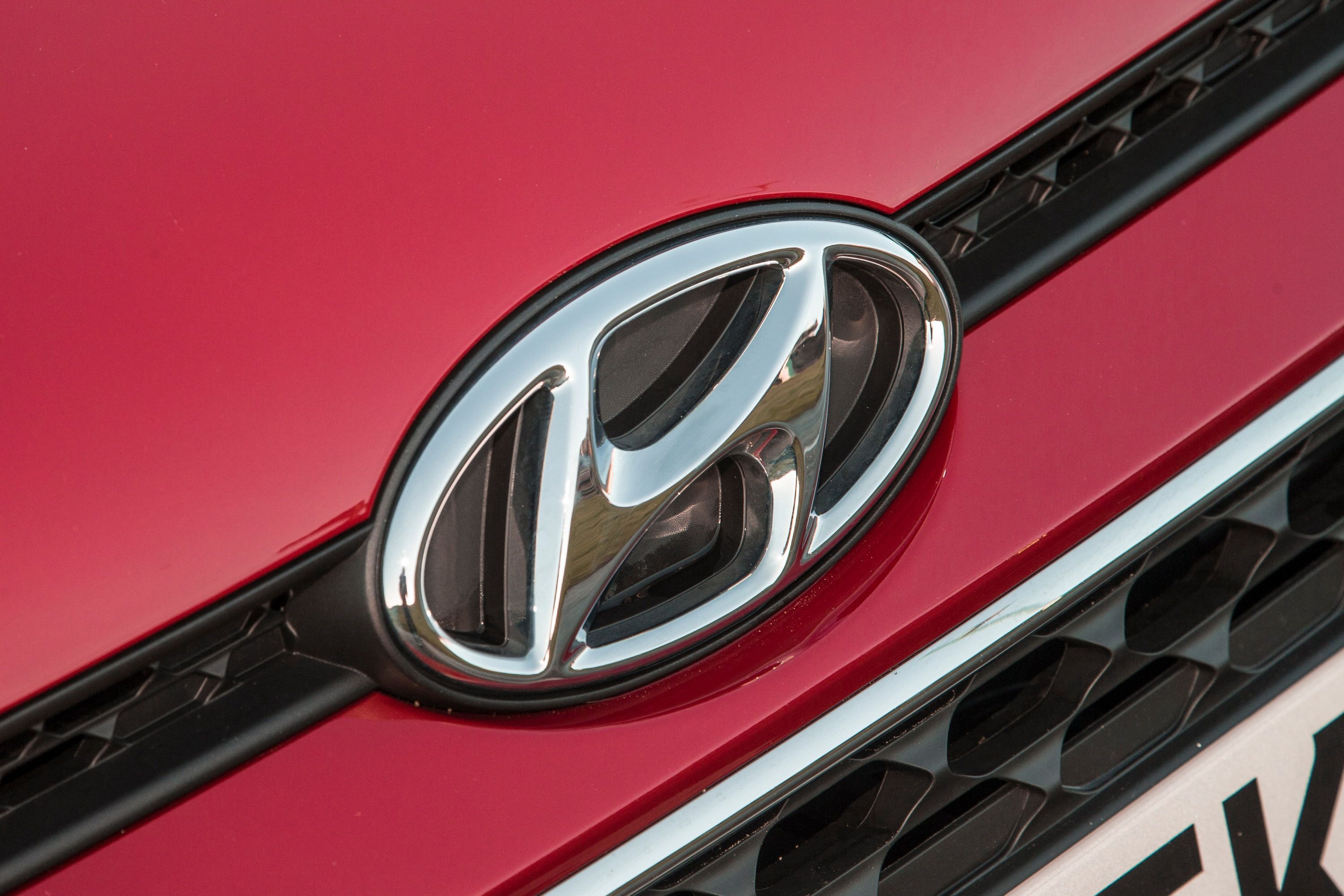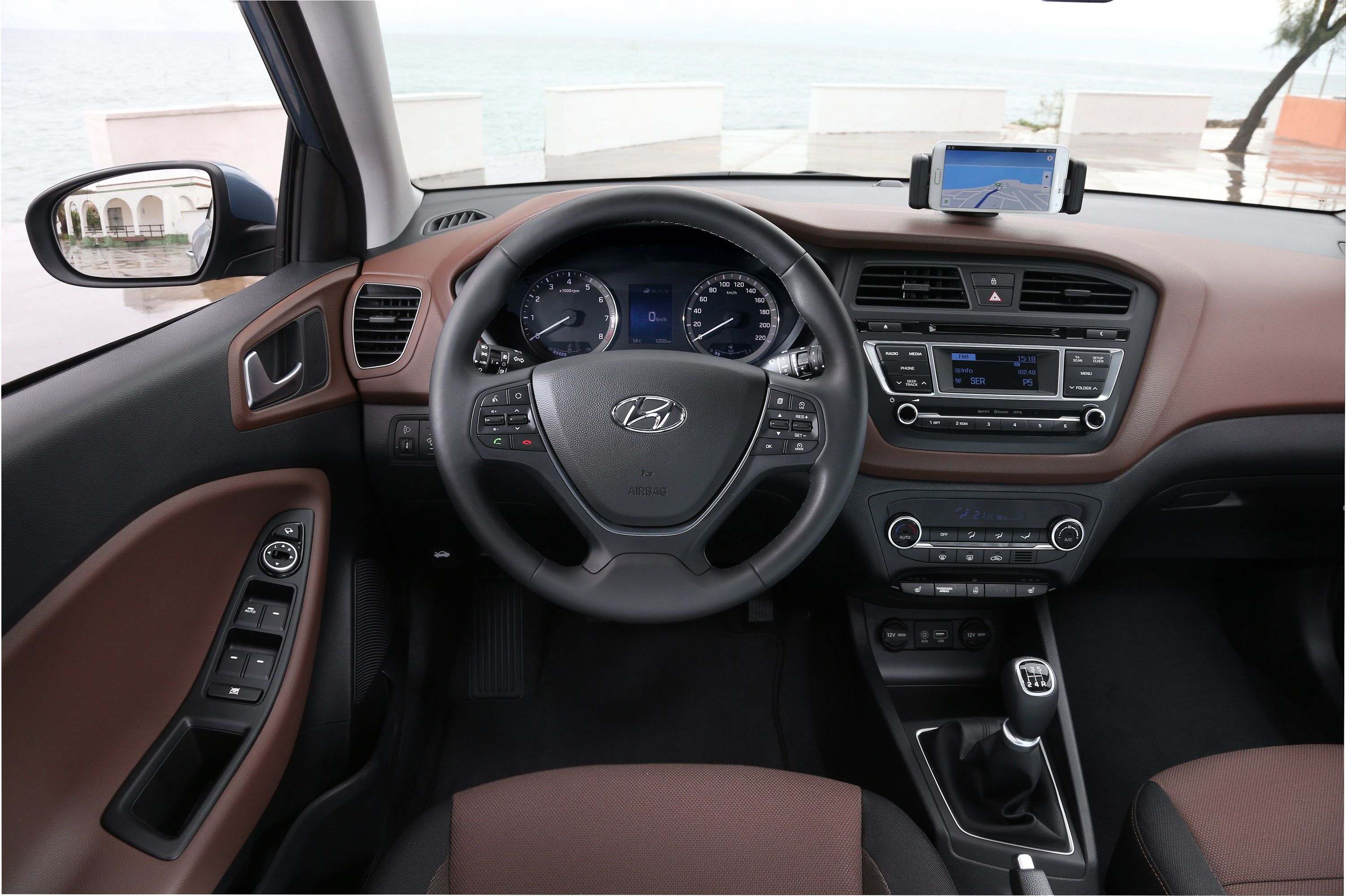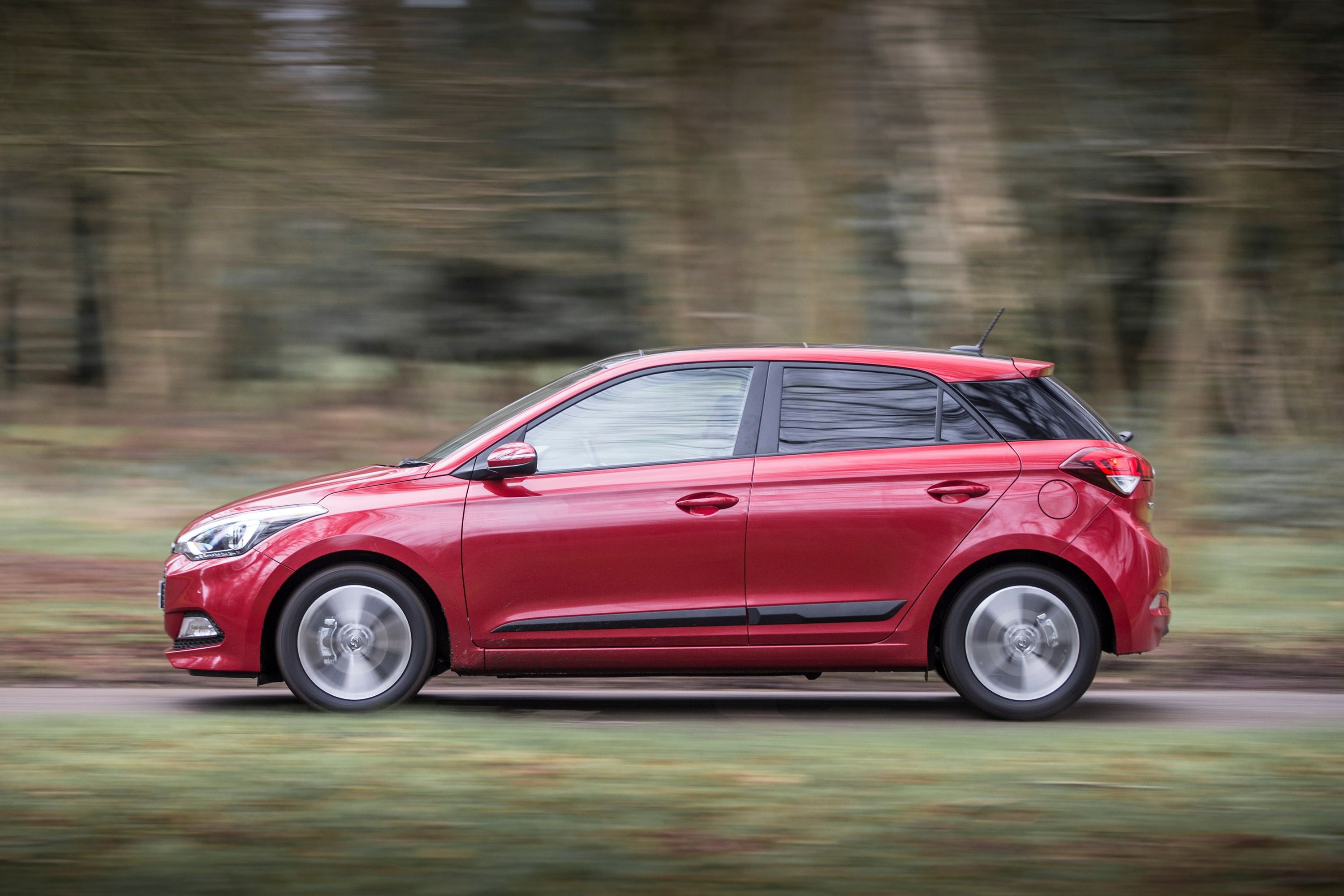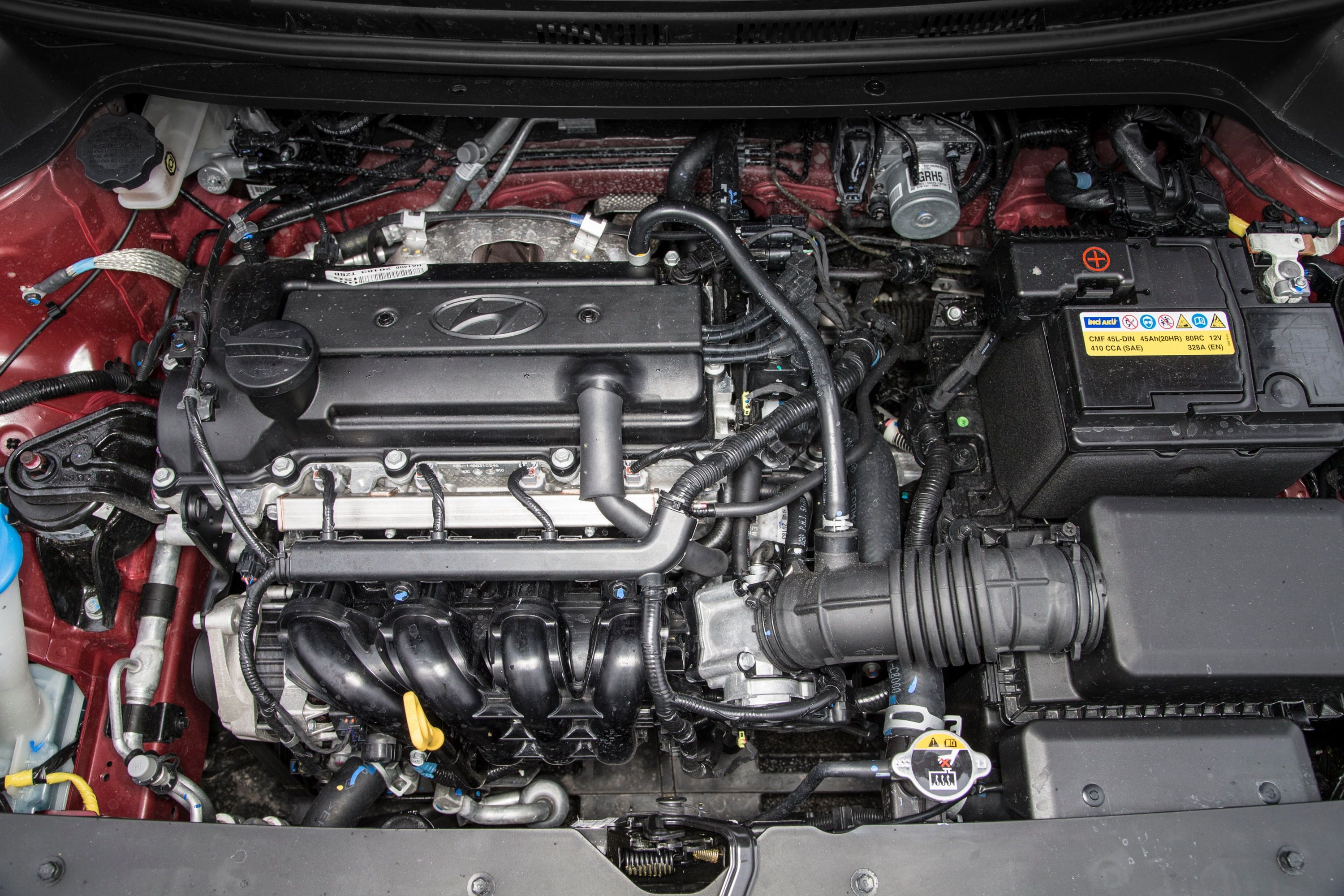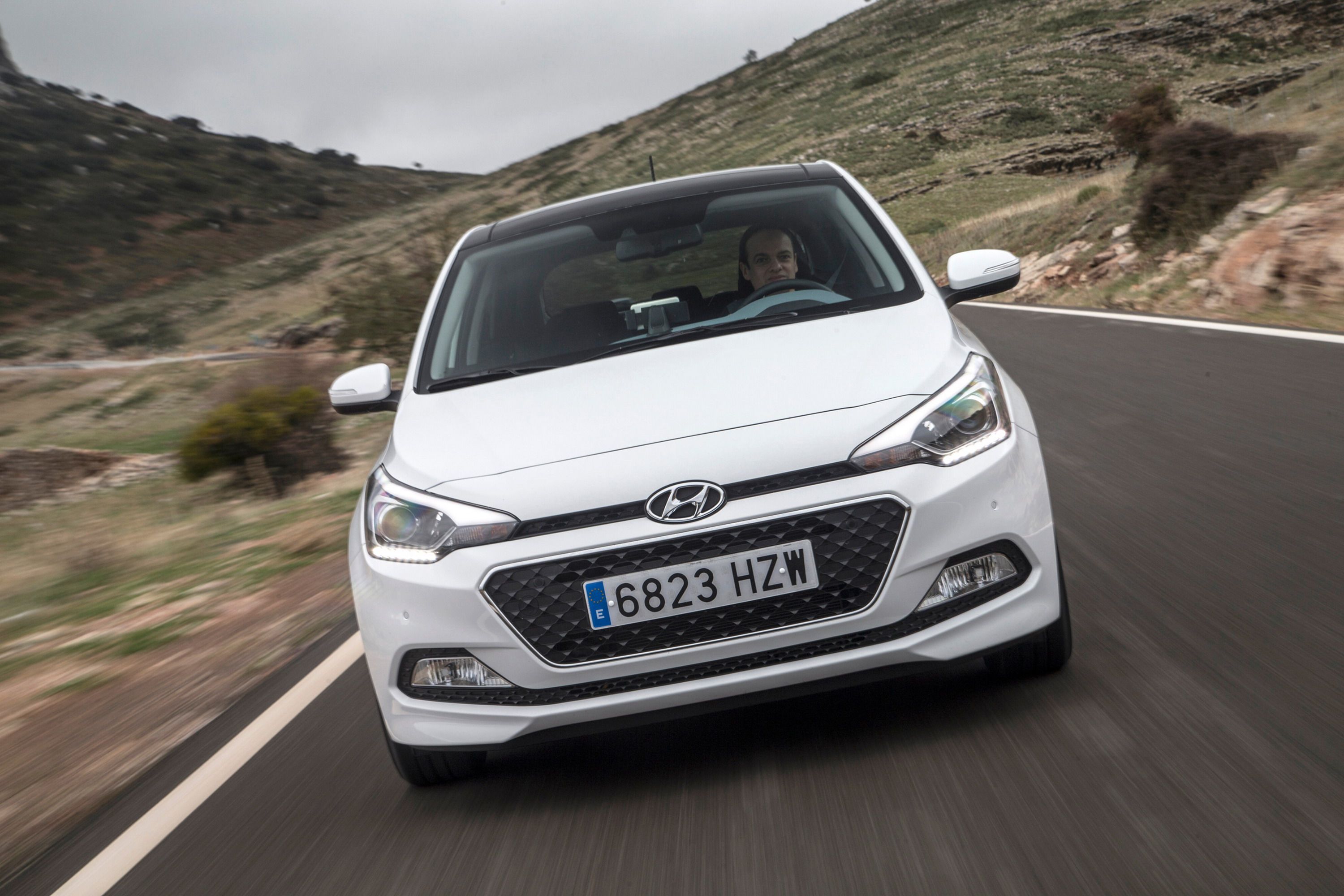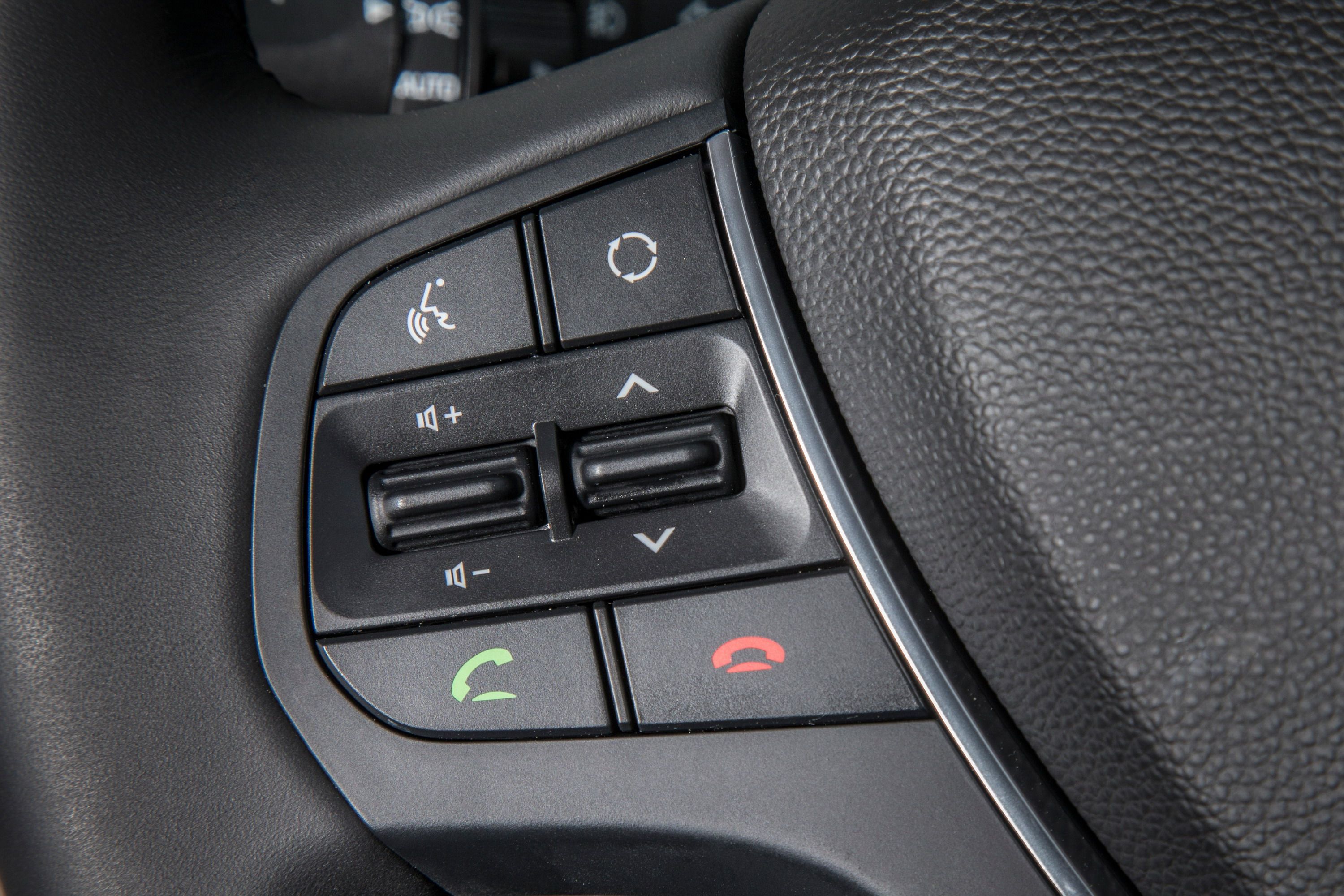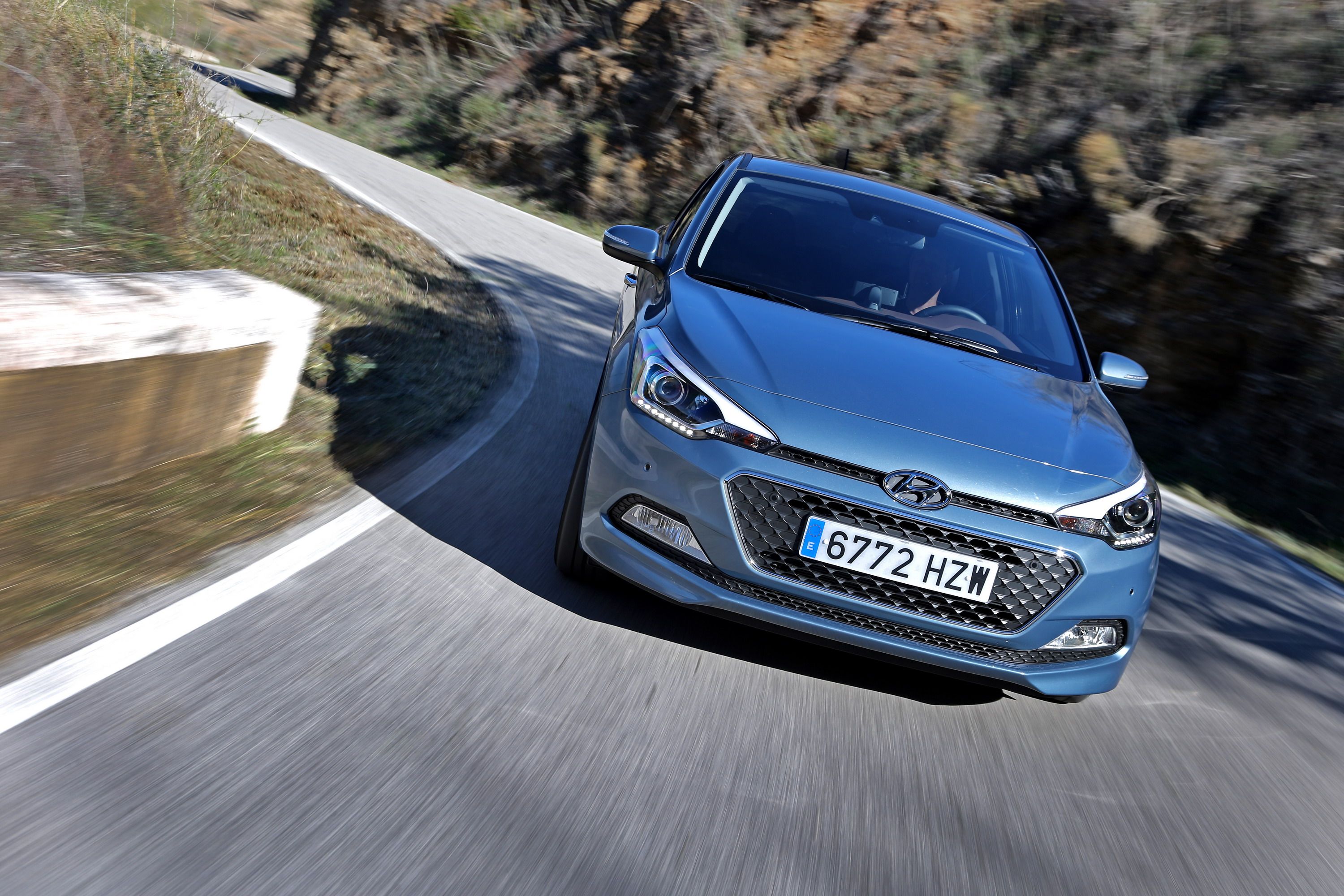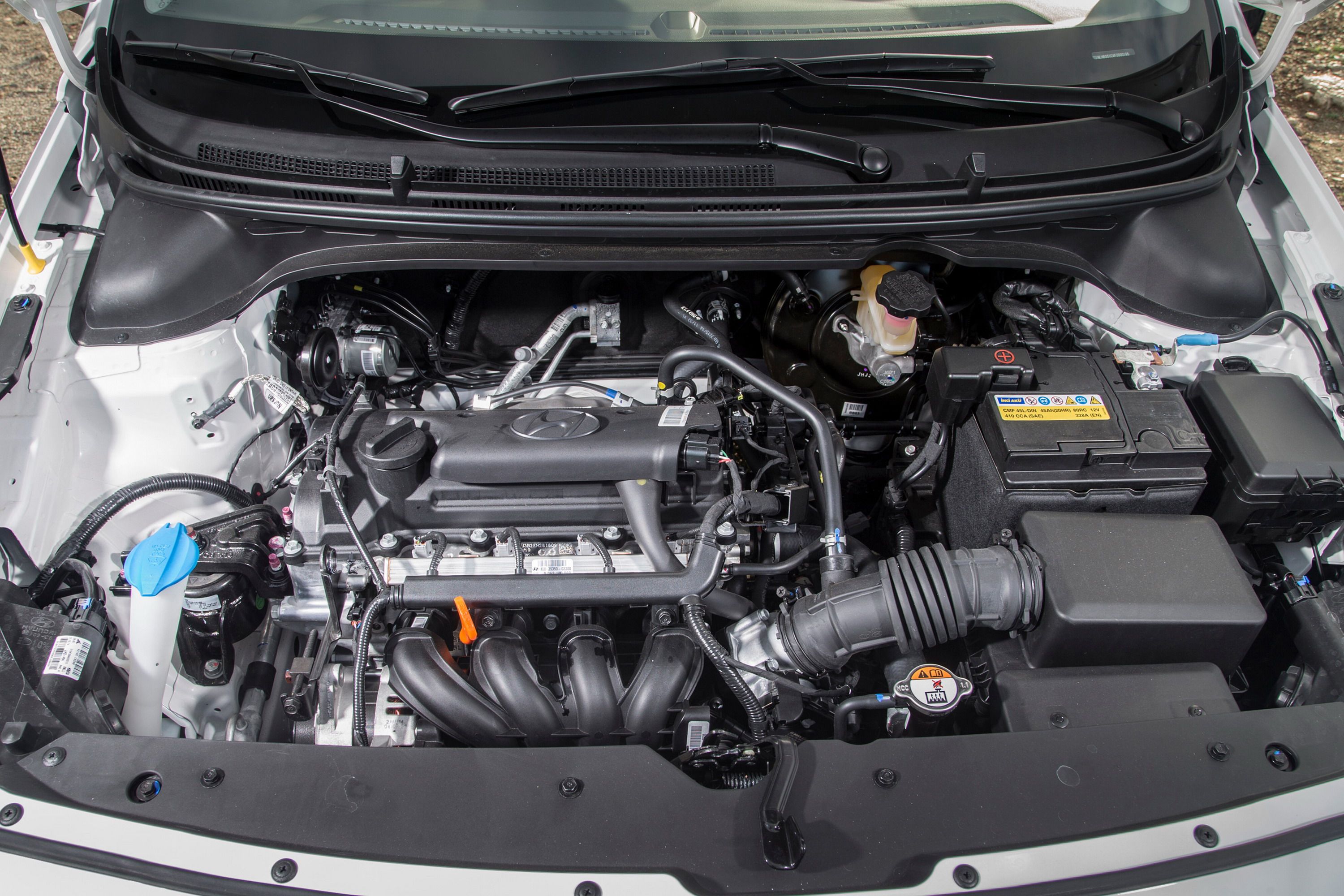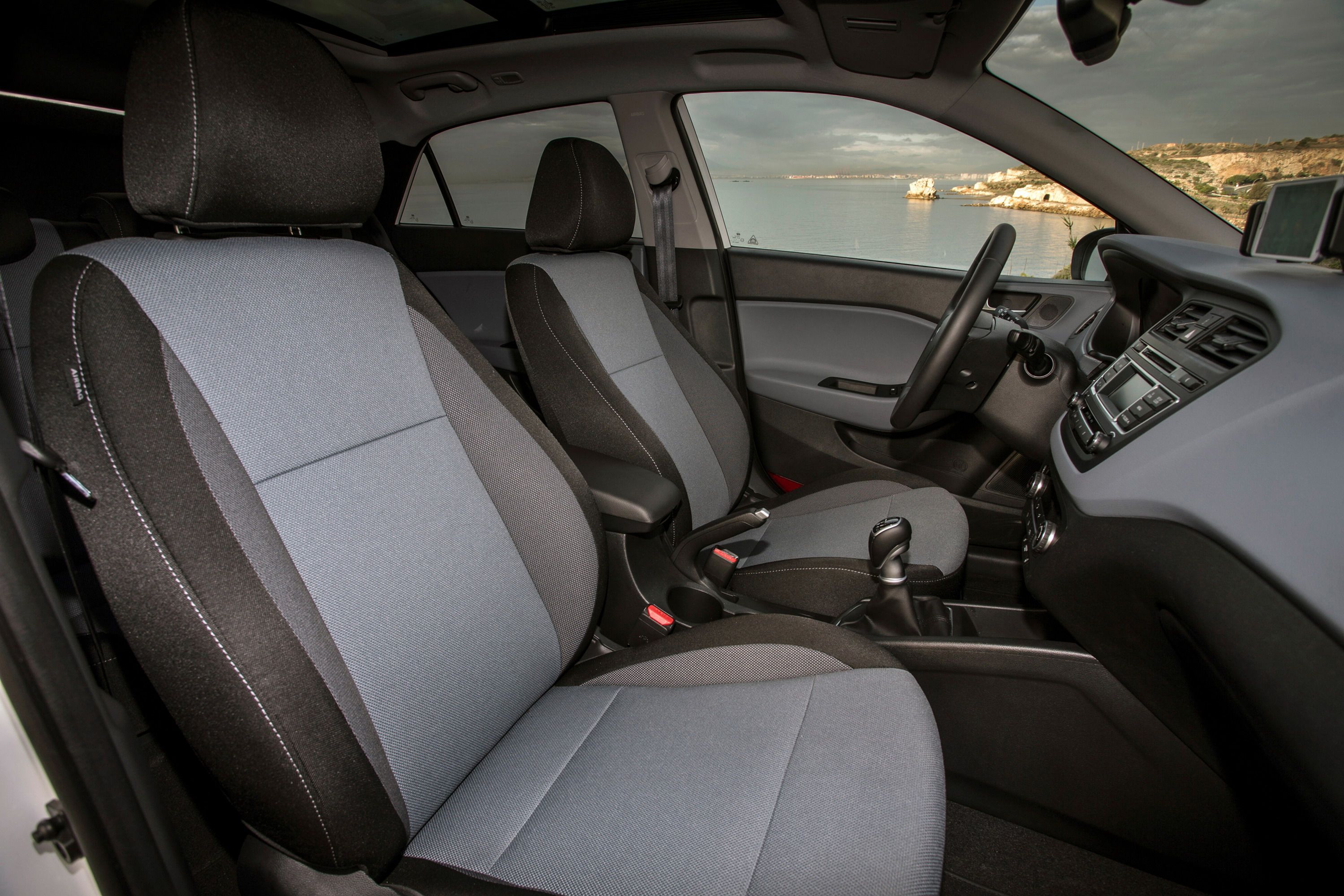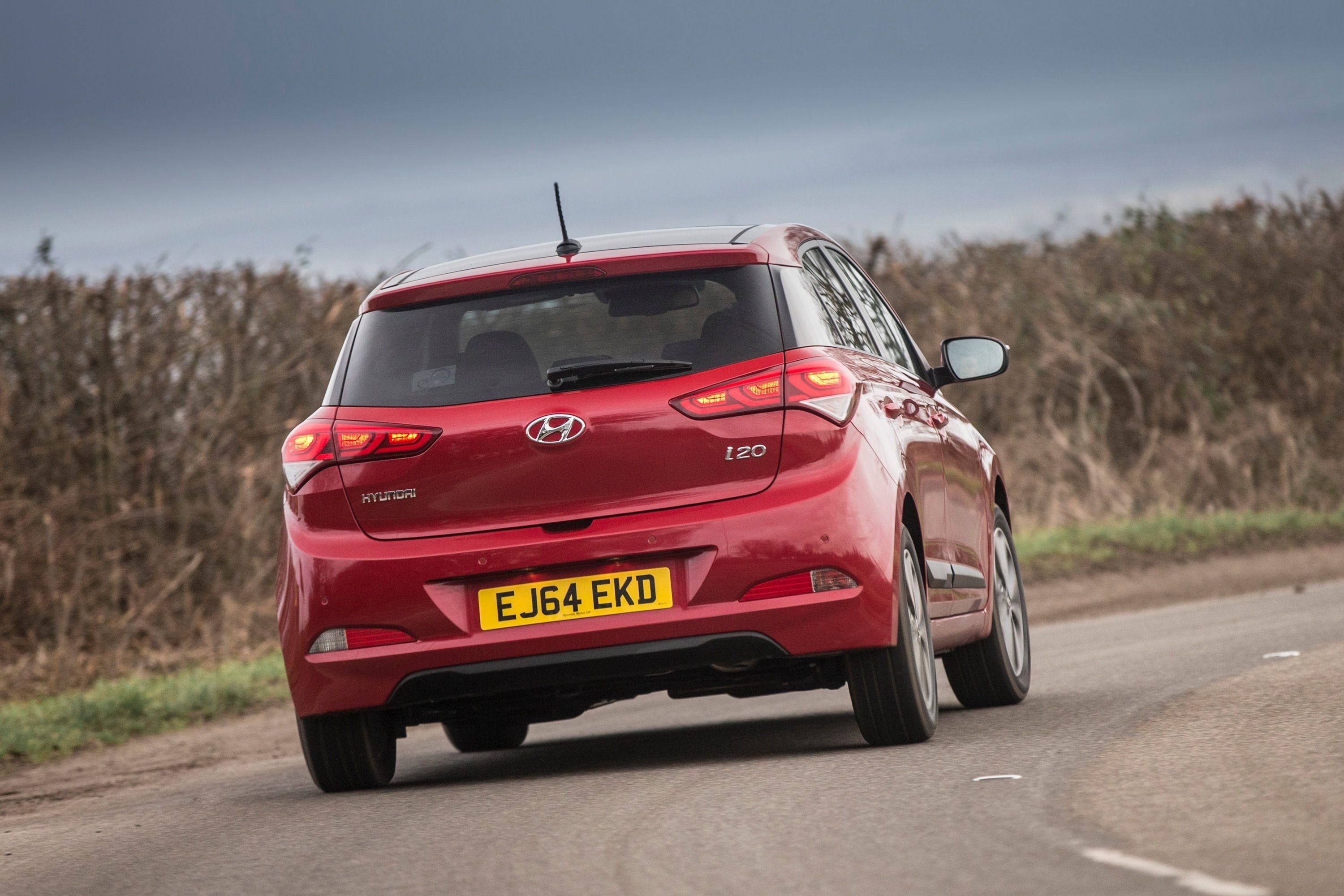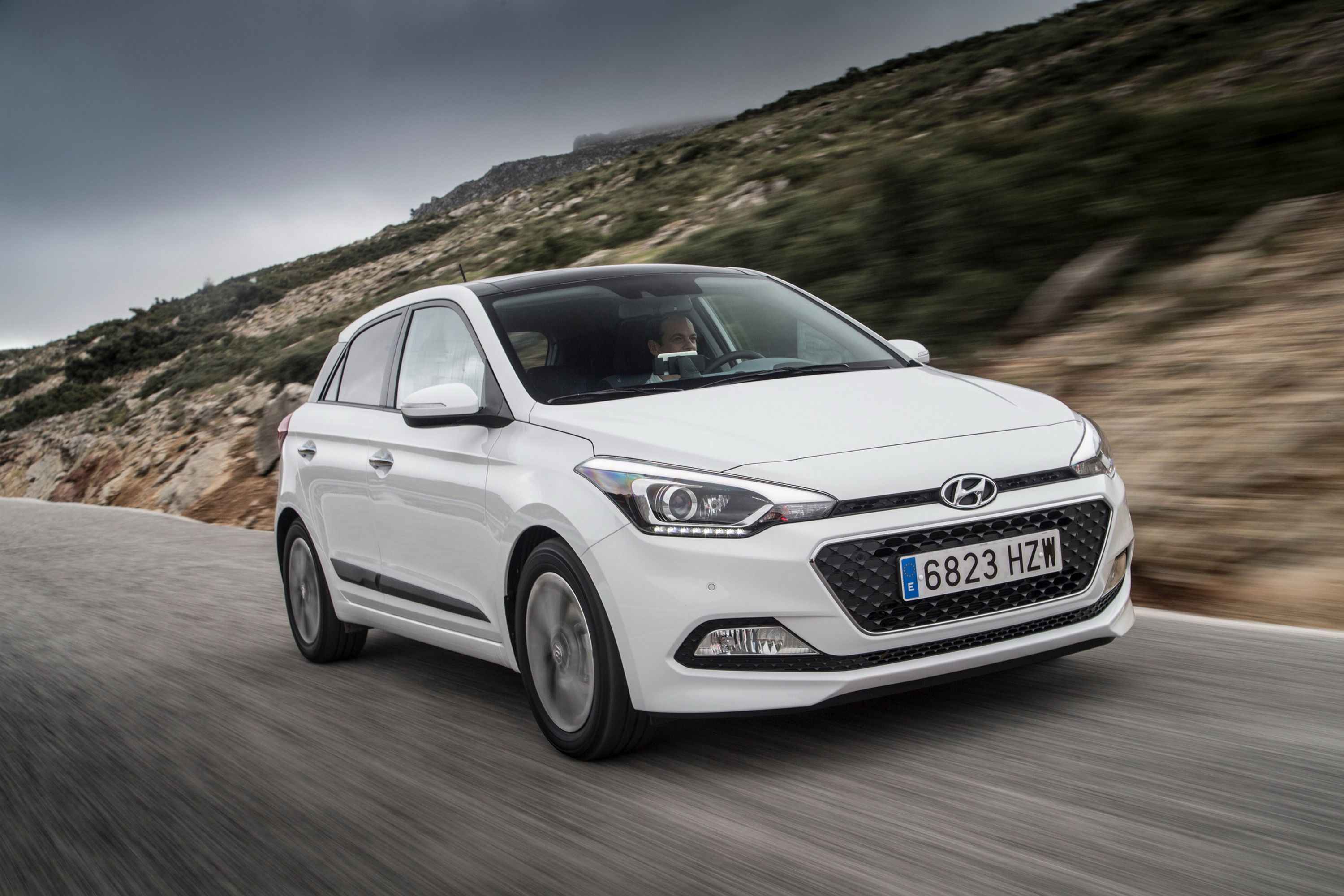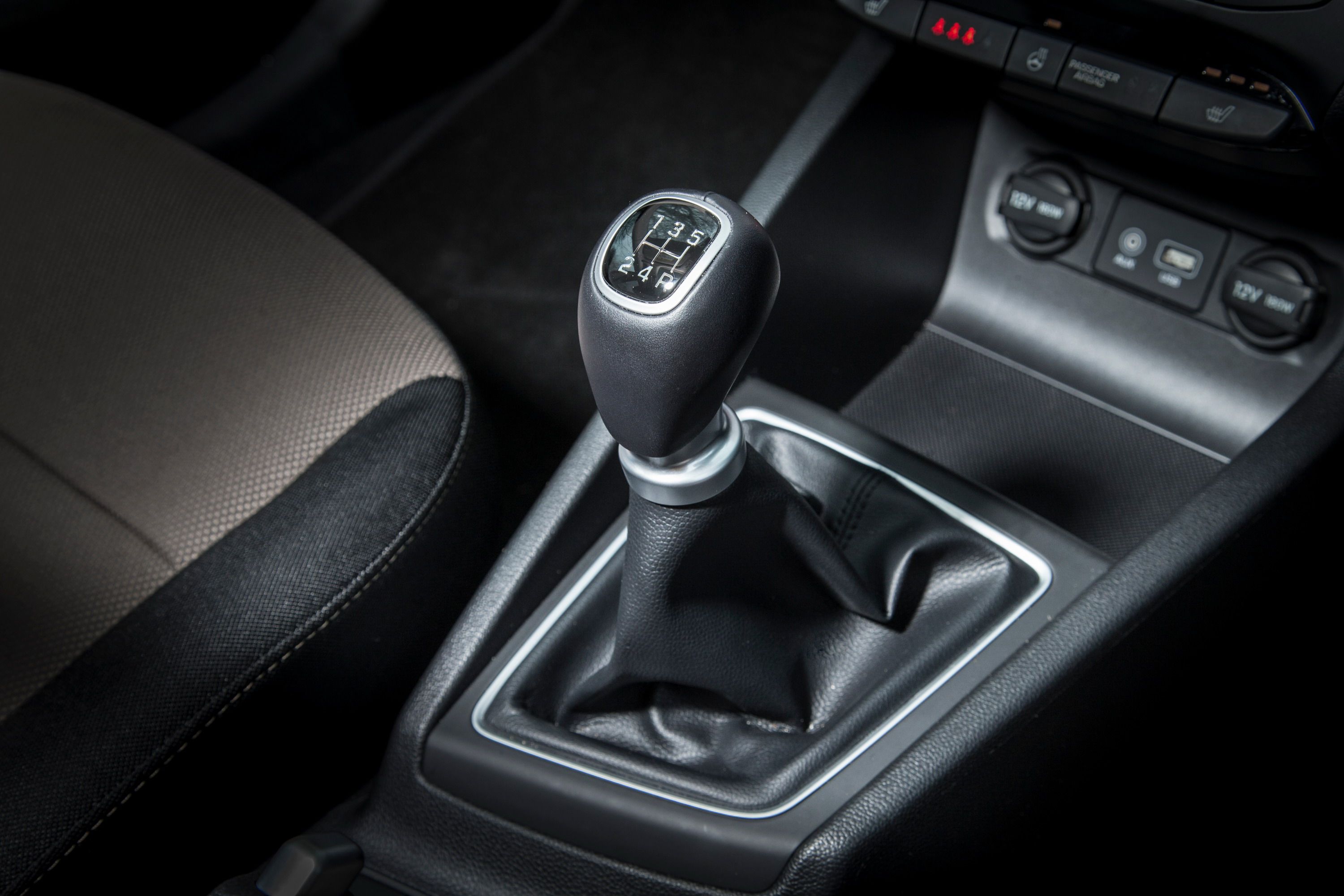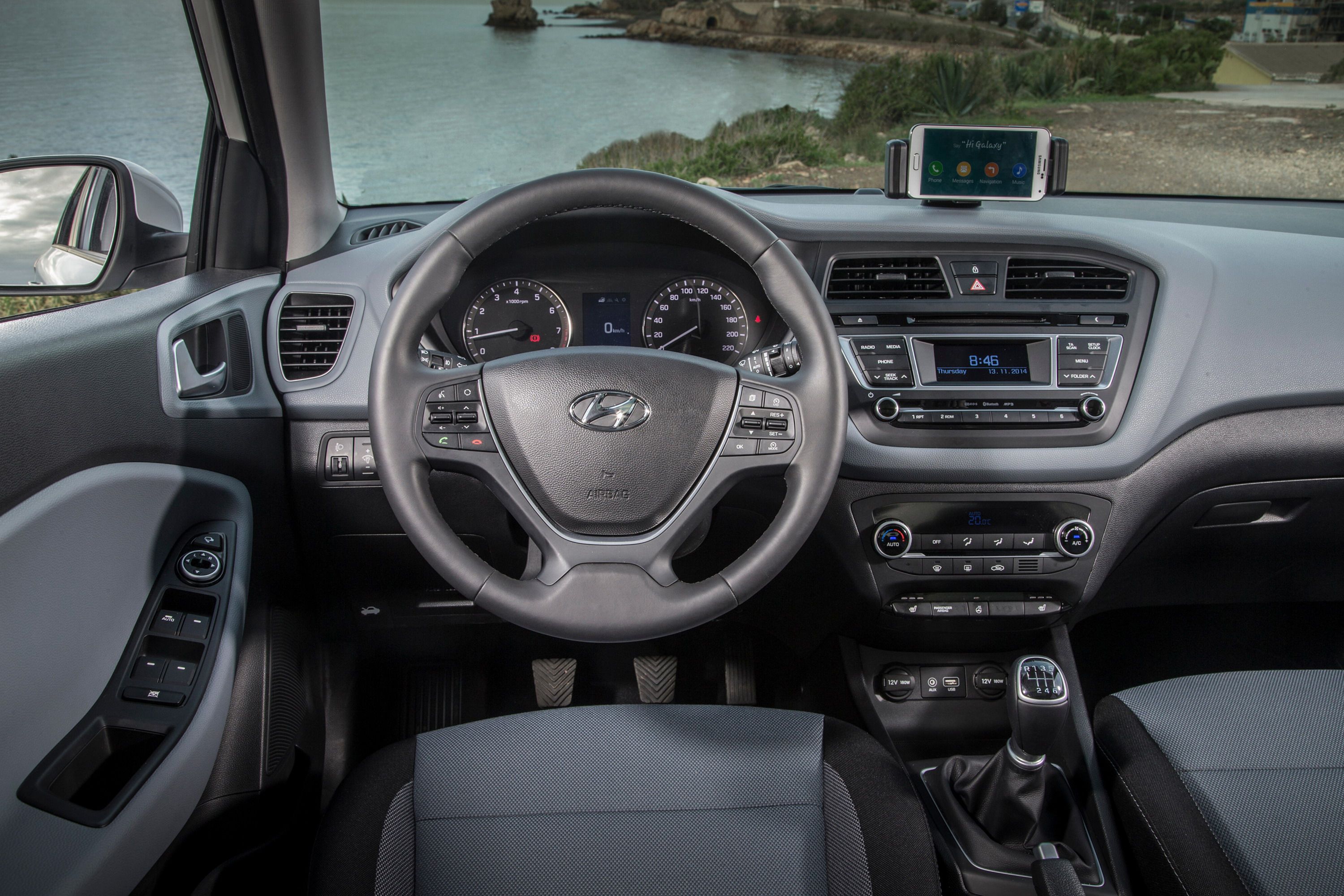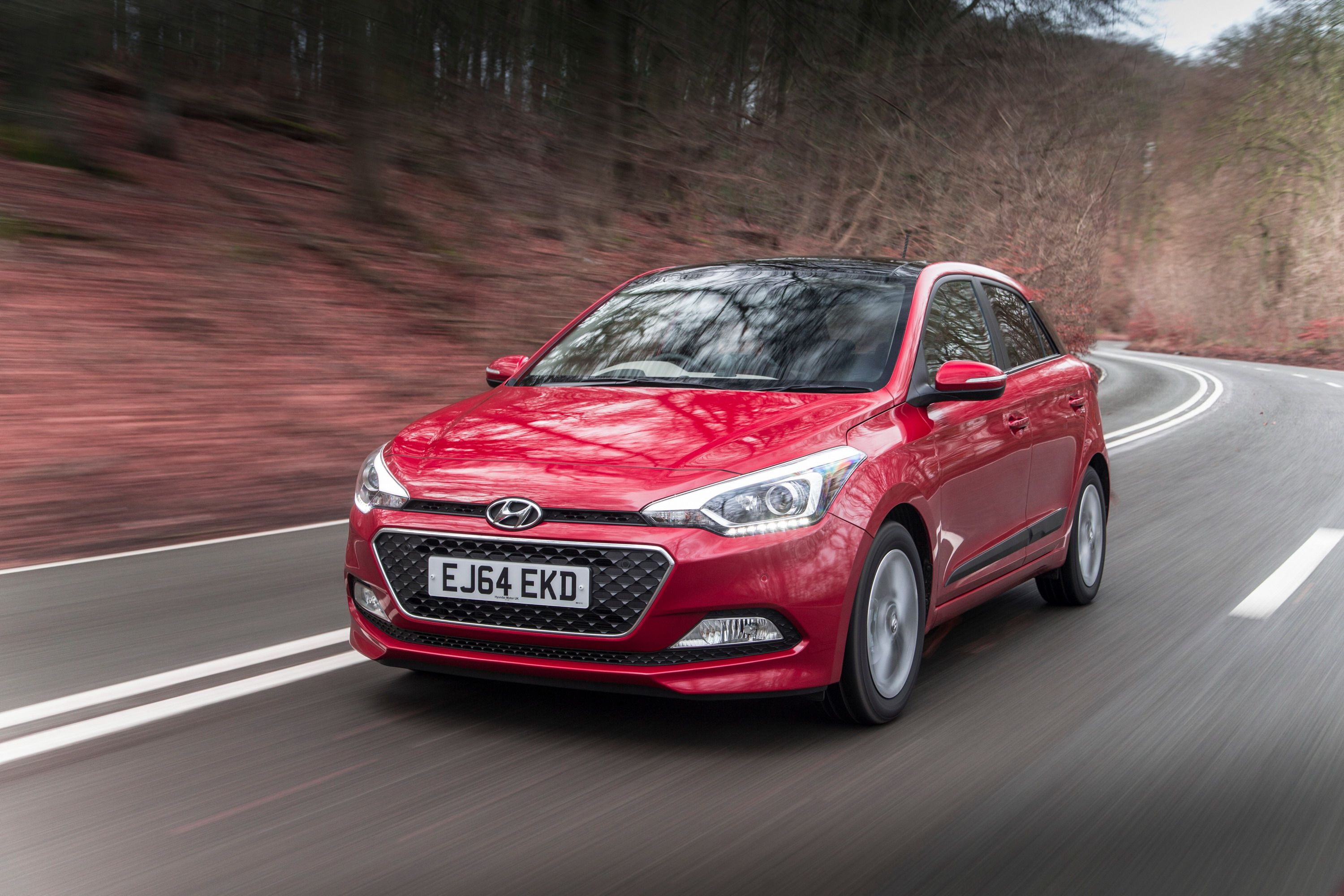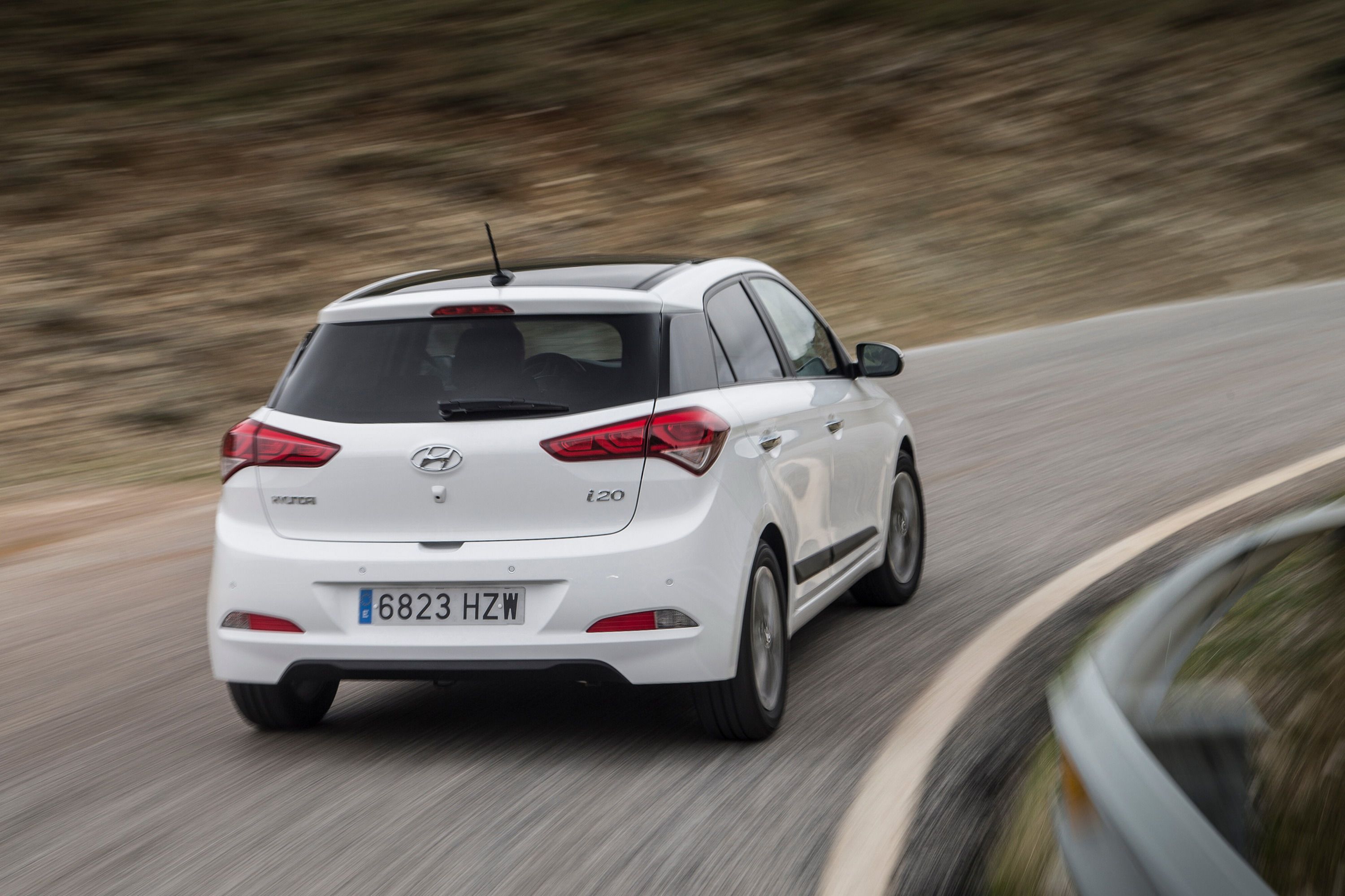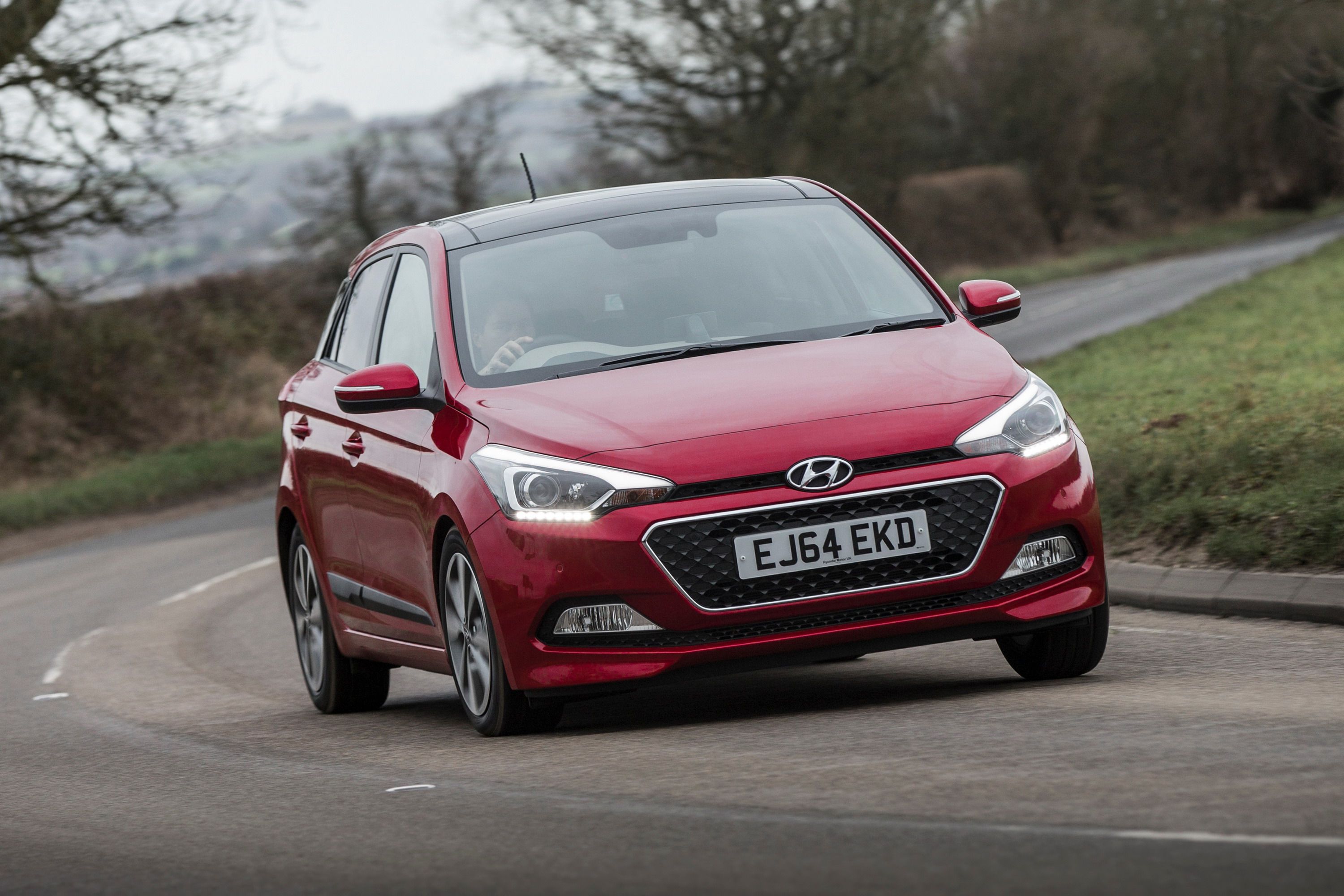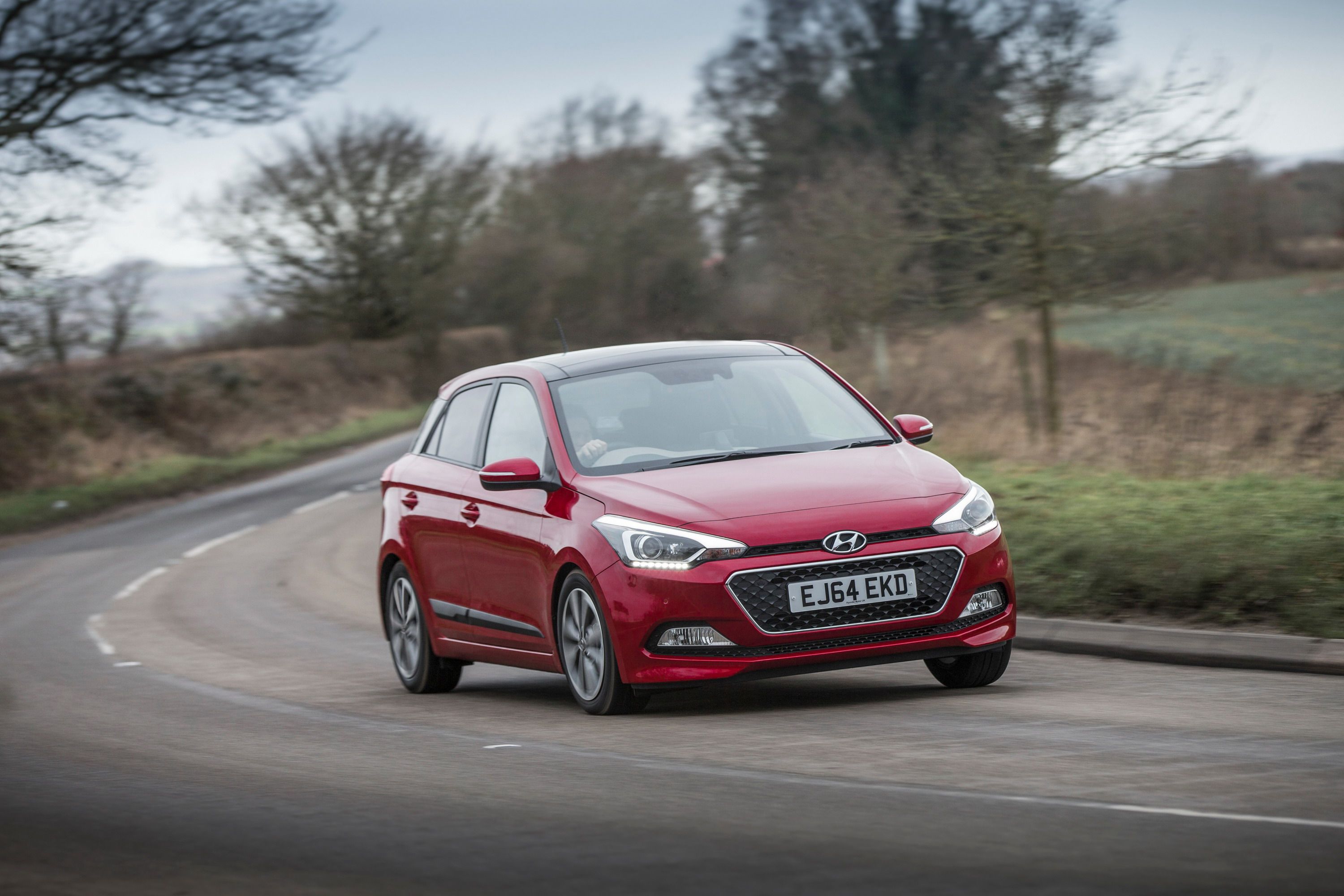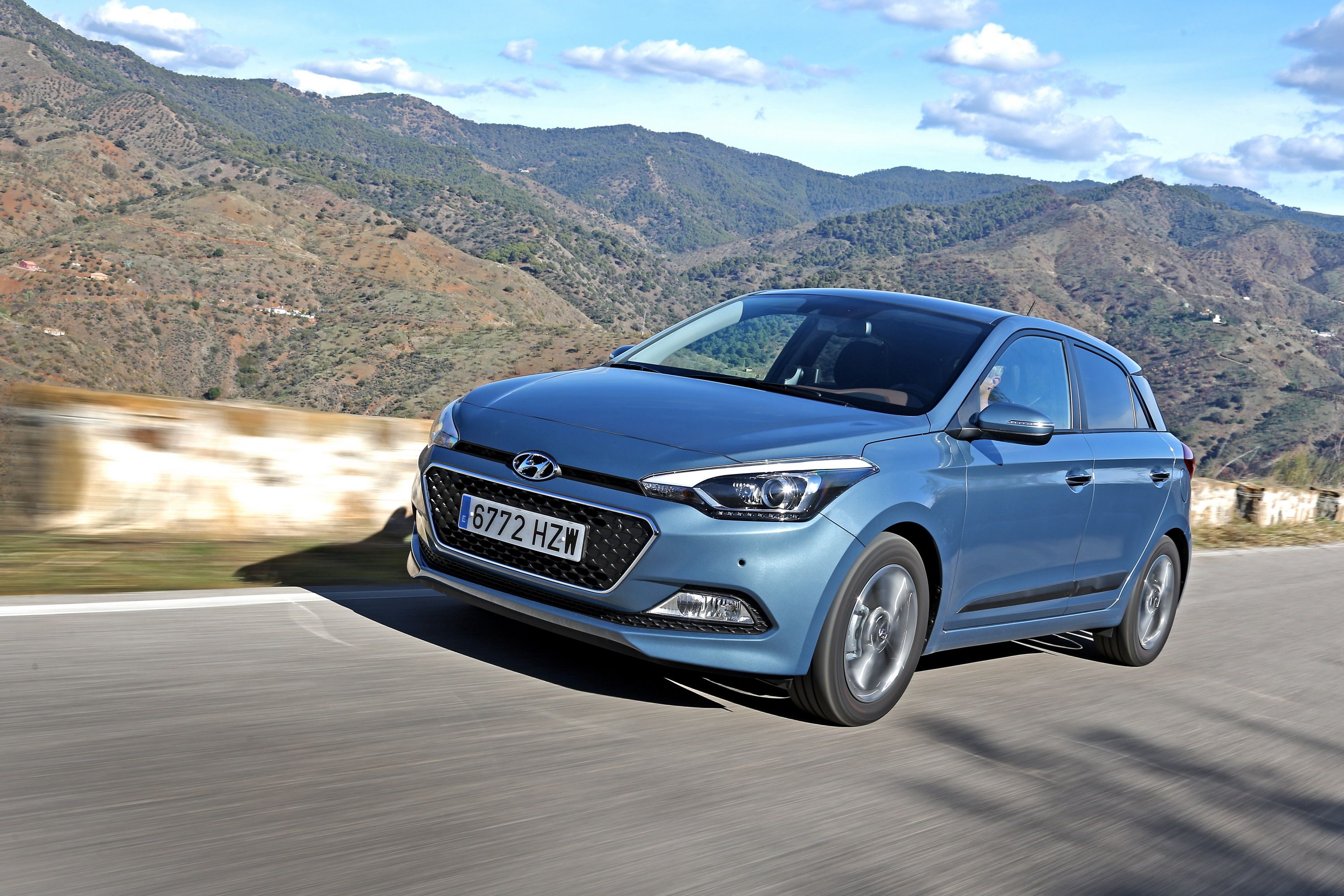The Hyundai i20->ke3257 was released in 2007 as a replacement for the Hyundai->ke201 Getz and to fill the gap between the i10 and i30->ke2753. For 2015, Hyundai ushered in a new generation of the i20, featuring a number of enhancements over the previous model. Highlights include a larger trapezoidal grille that sits higher than before, leaving room for a small lip at the bottom of the fascia and new headlights that are connected via a small air inlet at the end of the hood. The side profile of the i20 carries on relatively unchanged, but the rear end got new taillights that wrap around the rear quarters and extend onto the rear hatch. The rear fascia also got a sportier look to round out the exterior. Overall, the i20 has a wheelbase that is 1.5-inches longer than the outgoing model, which means there is improved legroom in the front and rear. On top of that, the dashboard got a completely new layout. The i20 came available with a number of gasoline and diesel engines that range anywhere between 73 horsepower and 98 horsepower.
Of course, cars in the supermini class don’t get a lot of love here in the U.S. – in fact outside of models like the Smart Fortwo->ke1744; there is almost no competition here. With that said, it should come as no surprise that the i20 isn’t making it across the drink to the U.S. There is, however, plenty of competition in the European market with models like the Volkswagen Polo->ke322 and Ford Fiesta->ke1170 climbing the ranks as the rest of the world continues to indulge in the subcompact or supermini market. To see how well the new Hyundai i20 competes, check out our full review below.
Continue reading to find out more about the 2015 Hyundai i20.
2015 Hyundai i20
- Make: Array
- Model: 2015 Hyundai i20
- Engine/Motor: inline-4
- Horsepower: 73 @ 5500
- Torque: 89 @ 4000
- [do not use] Vehicle Model: Array
Exterior
The new exterior is a huge step forward from the first-gen i20. Influenced by the brand's already familiar Fluidic Sculpture 2.0 design, the styling is bold and modern. A large trapezoidal mouth occupies most of the bumper, while a thin grille connects the headlamps together. The units, which extend into the fenders right above the wheel arches, include bi-function projection headlamps, LED daytime running lights and LED positioning lamps. A set of broad foglamps are mounted in the lower apron, part of a third, nicely sculpted inlet that runs across the bumper.
Around back, a par of redesigned, boomerang-shaped taillights complement the reshaped tailgate and fenders. The scenario is completed by a revised bumper and a new spoiler mounted atop the tailgate. From the side, the i20 is highlighted by mildly sculpted body panels and a crisp waistline running between the headlamps and taillights. The black side moldings fitted at the base of the doors and the new set of eight-spoke alloy wheels add a touch of premium to the shell.
Overall, the car's compact exterior dimensions have changed very little, as the new i20 measures 4,035mm (158.8 inches) in length, making it only 40mm (1.5 inches) longer than the outgoing model.
Exterior Dimensions
|
Overall length |
4,035 MM (158.85 Inches) |
|
Overall width |
1,734 MM (68.26 Inches)(excluding door mirrors) |
|
Overall height |
1,474 MM (58.03 Inches) |
|
Wheelbase |
2,570 MM (101.18 Inches) |
|
Ground clearance |
140 MM (5.51 Inches) |
|
Front overhang |
815 MM (32.08 Inches) |
|
Rear overhang |
650 MM (25.59 Inches) |
|
Front track |
1,520 MM (59.84 Inches) (185/65 R15) / 1,514 MM (59.60 Inches) (195/55R16) |
|
Rear track |
1,519 MM (59.80 Inches) (185/65 R15) / 1,513 MM (59.56 Inches) (195/55R16) |
Interior
The redesigned interior boast numerous improvements over its predecessor. The 2,570mm (101.1 inches) wheelbase -- 40mm (1.5 inches) longer than its forerunner -- translates into enhanced cabin space, and improved front and rear legroom. The Koreans even claim the i20 offers best-in-class front and rear legroom combined at 1,892mm (74.4 inches). Luggage capacity with the rear seats upright is also claimed to lead the segment at 326 liters (11.5 cubic feet).
The new cabin is also a significant departure from the previous model. Although the dashboard still looks plasticky, drivers will enjoy a completely new layout. The unit incorporating the A/C and radio controls sits further above the center console, which is also new and features new buttons and switches. There's also a new steering wheels and instrument cluster, as well as redesigned door panels with easier to use buttons.
Though there's nothing too fancy about the new interior, the i20 does benefits from a class-exclusive panoramic sunroof. Available as an option, the sunroof covers more than half the roof, a feat that can't be had from Ford, Volkswagen or Renault. A rearview camera and front and rear LED lighting are also available on the brand-new supermini, along with a wide array of high-tech and comfort-enhancing features.
Interior Dimensions
|
Front |
Rear |
|
|
Head room |
1,038 MM (40.86 Inches) |
978 MM (38.50 Inches) |
|
Leg room |
1,098 MM (43.22 Inches) |
794 MM (31.25 Inches) |
|
Shoulder room |
1,365 MM (53.74 Inches) |
1,350 MM (53.14 Inches) |
|
Hip room |
1,301 MM (51.22 Inches) |
1,252 MM (49.29 Inches) |
Drivetrain
Much like its predecessor, the second-generation i20 is available with a wide array of gasoline and diesel drivetrains. The petrol range begins with a 1.2-liter four-cylinder rated at 73 horsepower and 89 pound-feet of torque. These figures come with a 0-to-62 mph sprint of 13.6 seconds and a top speed of 99 mph. The exact same engine can be ordered with 82 horses, which improves 0-to-62 mph sprints by a half-second and top speed by six mph. The third gasoline engine is a 1.4-liter four-banger generating 98 horsepower and 98 pound-feet. When equipped with the manual, this version sprints to 62 mph in 11.6 seconds and up to 114 mph. The automatic model is slower, needing 13.2 ticks to hit 62 mph. Top speed sits at 105 mph.
On the diesel front, customers also get three options. First up is the 1.1-liter three-pot with 73 horses and 132 pound-feet of twist. If you thought the base gasoline model was slow, then you should know this one takes 16 seconds to reach 62 mph. The same engine is available with Blue Drive technology, which makes it about 40 percent more fuel efficient in the city. Power rating are the same. More oomph comes from the range-topping 1.4-liter four-pot, which delivers 88 horsepower and 177 pound-feet of torque. This model needs 12.1 seconds to hit 62 mph on its way to a top speed of 108 mph.
Drivetrain Specifications - Petrol Engines
|
1.2-litre 75 ps |
1.2-litre 84 ps |
1.4-litre 100 ps |
|
|
Type |
Kappa, 4 cylinders in line, DOHC, with dual CVVT |
Kappa, 4 cylinders in line, DOHC, with dual CVVT |
Kappa, 4 cylinders in line, DOHC, with dual CVVT |
|
Capacity |
1,248 cc |
1,248 cc |
1,368 cc |
|
Bore x stroke |
71.0 x 78.8 mm |
71.0 x 78.8 mm |
72.0 x 84.0 mm |
|
Compression ratio |
10.5 |
10.5 |
10.5 |
|
Power |
73 HP @ 5,500 RPM |
82 HP @ 6000 rpm |
98 HP @ 6000 rpm |
|
Torque |
89 LB-FT @ 4000 RPM |
89 LB-FT @ 4000 rpm |
98 LB-FT @ @ 3500 rpm |
|
Top speed |
99 mph |
105 mph |
114 mph (MT) / 105 mph (AT) |
|
0-62 mph acceleration |
13.6 seconds |
13.1 seconds |
11.6 seconds (MT) / 13.2 seconds (AT) |
|
Urban mpg (l/100km) |
47.1 (6.0) |
42.8 (6.6) |
39.2 (7.2) (MT) / 30.7 (9.2) (AT) |
|
Extra urban mpg (l/100km) |
68.9 (4.1) |
67.3 (4.2) |
61.4 (4.6) (MT) / 53.3 (5.3) (AT) |
|
Combined mpg (l/100km) |
58.9 (4.8) |
55.4 (5.1) |
51.4 (5.5) (MT) / 42.2 (6.7) (AT) |
|
C02 Emissions (g/km) |
112 |
119 |
127 (MT) / 155 (AT) |
Drivetrain Specifications - Diesel Engines
|
1.1-litre 75 ps |
1.1-litre 75 ps Blue Drive |
1.4-litre 90 ps |
|
|
Type |
U-II, 3 cylinders in line |
U-II, 3 cylinders in line |
U-II, 4 cylinders in line |
|
Capacity |
1,120 cc |
1,120 cc |
1,396 cc |
|
Bore x stroke |
75 x 84.5 mm |
75 x 84.5 mm |
75 x 79 mm |
|
Type |
16,0 |
16,0 |
16,0 |
|
Power |
73 HP @ 4000 rpm |
73 HP @ 4000 rpm |
88 HP @ 4000 rpm |
|
Torque |
132 LB-FT @ 1750 - 2500 rpm |
132 LB-FT @ 1750 - 2500 rpm |
177 LB-FT @ 1500 – 2500 rpm |
|
Top speed |
98 mph |
98 mph |
108 mph |
|
0-62 mph acceleration |
16.0 seconds |
16.0 seconds |
12.1 seconds |
|
Urban mpg (l/100km) |
57.6 (4.9) |
80.7 (3.5) |
57.6 (4.9) |
|
Capacity |
83.1 (3.4) |
94.2 (3.0) |
80.7 (3.5) |
|
Combined mpg (l/100km) |
70.6 (4.0) |
88.3 (3.2) |
68.9 (4.1) |
|
C02 Emissions (g/km) |
103 |
84 |
106 |
Safety
Also upgraded in the safety department, the new i20 comes with six airbags (front, front side, and full length curtain), child seat anchors, Lane Departure Warning, Vehicle Stability Management, Electronic Stability Program, Anti-Lock Brakes, and Hill-Start Assist.
Prices
Pricing for the i20 starts from £10,995 (about $17,070), for which you get the least powerful gasoline version. The diesel range retails from £12,745 (around $19,790). At the other end of the lineup, the 1.4 gasoline model with the automatic transmission costs £17,200 (about $26,720) before options, while the range-topping diesel model fetches at least £17,700 (around $27,460).
UK Prices
|
New Generation i20 |
CO2 Emissions (g/km) |
Insurance Group (1-50) |
VED Band |
Recommended On The Road Price |
|
S |
||||
|
1.2 75PS |
112 |
5E |
C |
£10,995.00 |
|
S Air |
||||
|
1.2 75PS |
112 |
5E |
C |
£11,745.00 |
|
S Blue |
||||
|
1.1 CRDi 75PS |
84 |
6E |
A |
£12,745.00 |
|
SE |
||||
|
1.2 84PS |
119 |
6E |
C |
£13,025.00 |
|
1.4 100PS |
127 |
10E |
D |
£13,625.00 |
|
1.4 100PS Auto |
155 |
10E |
G |
£14,525.00 |
|
1.1 CRDi 75PS |
103 |
6E |
B |
£14,525.00 |
|
1.4 CRDi 90PS |
106 |
11E |
B |
£15,025.00 |
|
Premium |
||||
|
1.2 84PS |
119 |
7E |
C |
£14,025.00 |
|
1.4 100PS |
127 |
10E |
D |
£14,625.00 |
|
1.4 100PS Auto |
155 |
10E |
G |
£15,525.00 |
|
1.4 CRDi 90PS |
106 |
12E |
B |
£16,025.00 |
|
Premium SE |
||||
|
1.2 84PS |
119 |
7E |
C |
£15,025.00 |
|
1.4 100PS |
127 |
10E |
D |
£15,625.00 |
|
1.4 100PS Auto |
155 |
10E |
G |
£16,525.00 |
|
1.4 CRDi 90PS |
106 |
12E |
B |
£17,025.00 |
|
Premium Nav |
||||
|
1.2 84PS |
119 |
TBC |
C |
£14,700.00 |
|
1.4 100PS |
127 |
TBC |
D |
£15,300.00 |
|
1.4 100PS Auto |
155 |
TBC |
G |
£16,200.00 |
|
1.4 CRDi 90PS |
106 |
TBC |
B |
£16,700.00 |
|
Premium SE Nav |
||||
|
1.2 84PS |
119 |
TBC |
C |
£15,700.00 |
|
1.4 100PS |
127 |
TBC |
D |
£16,300.00 |
|
1.4 100PS Auto |
155 |
TBC |
G |
£17,200.00 |
|
1.4 CRDi 90PS |
106 |
TBC |
B |
£17,700.00 |
Competitors
2015 Volkswagen Polo
The Volkswagen Polo is currently one of the best-selling superminis in Europe and one of the most important competitors to the Hyundai i20. Available with a bevy of gasoline and diesel engines, the Polo can be both a fuel-sipping compact and a nippy city ride. In its mildest trim, the small hatch benefits from a 1.0-liter three-cylinder that generates 59 horsepower and 70 pound-feet of torque. At the other side of the lineup lies a 1.4-liter TSI that delivers no less than 148 ponies. A powerful 1.4-liter TDI oil burner with 89 horses and 170 pound-feet on tap is also up for grabs.
Like most Volkswagens, the Polo comes with the latest in terms of convenience and safety features, outgunning most of its rivals. That's why the Polo is also more expensive compared to its competitors, with a sticker sitting at £11,100 ( about $17,220) in Britain. The range-topping model begins from £17,710 (around $27,480).
Read our full review here.
2014 Ford Fiesta
Also available in the United States, the Fiesta is a hot seller in Europe too. Unlike the U.S.-spec hatch, the European Fiesta can be had in two body styles, with three and five door, respectively. No less than five engines are available on most markets, including the naturally aspirated 1.6-liter four-banger, the 1.0-liter EcoBoost, and the 1.5-liter TDCi diesel. Output ranges from the 79 ponies churned by the 1.0-liter three-pot to the 123 horses cranked out by the turbocharged, 1.0-liter EcoBoost. The 1.6-liter four-cylinder generates 104 horsepower, while the 1.5-liter diesel is rated at only 74 ponies.
Available in numerous trim levels, the 2014 Ford Fiesta retails from £9,995 (about $15,510) in the United Kingdom. The sticker increases to £16,145 (around $25,050) once the Titanium X trim is selected and blows past the £17,250 (about $26,765) mark for the high-performance ST version.
Read our full review here.
Conclusion
Granted, the i20 sees notable improvements as far as exterior styling and interior amenities go. With vehicles such as the Ford Fiesta and the Volkswagen Polo highly popular in Europe, the redesigned Hyundai i20 will have a hard time establishing itself as a worthy competitor and it remains to be seen whether it will succeed or not. However, the second-generation model stands a better chance at bringing new customers into Hyundai dealerships than its dated predecessor.

